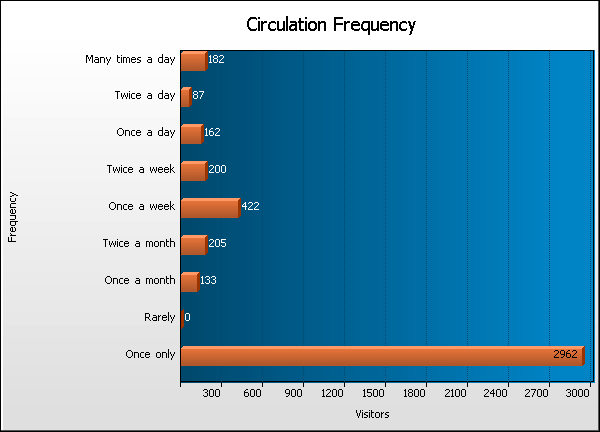|
Circulation Frequency |
| |
Frequency |
Hits |
% |
Bytes |
% |
Pages |
Visitors |
|
1 |
Many times a day |
|
|
38,142 |
182 |
|
2 |
Twice a day |
|
|
950 |
87 |
|
3 |
Once a day |
|
|
1,090 |
162 |
|
4 |
Twice a week |
|
|
1,090 |
200 |
|
5 |
Once a week |
|
|
2,005 |
422 |
|
6 |
Twice a month |
|
|
908 |
205 |
|
7 |
Once a month |
|
|
947 |
133 |
|
8 |
Rarely |
|
|
0 |
0 |
|
9 |
Once only |
|
|
14,102 |
2,962 |
| |
Average |
|
|
6,581 |
483 |
|
9 |
Totals |
|
|
59,234 |
4,353 |
|
|







